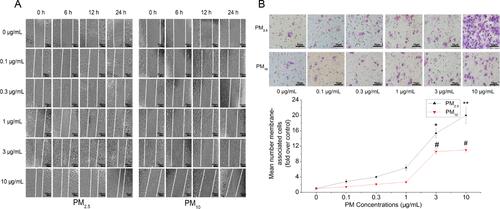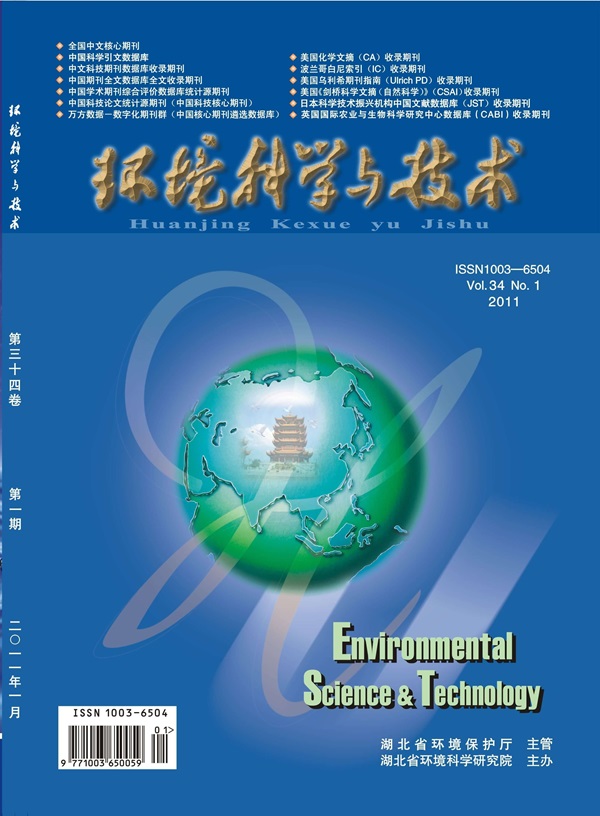Correction to “Winter Polycyclic Aromatic Hydrocarbon-Bound Particulate Matter from Peri-urban North China Promotes Lung Cancer Cell Metastasis”
IF 10.8
1区 环境科学与生态学
Q1 ENGINEERING, ENVIRONMENTAL
引用次数: 0
Abstract
We recently found that the incorrect representative images were used in Figure 3. The error affects only the presentation of representative images and not the underlying calculations. None of the conclusions of the work is affected. The wound healing assay of 0.3 μg/mL PM10 at 24 h and 10 μg/mL PM2.5 and PM10 at 24 h in Figure 3A and the transwell image panels of the 3 and 10 μg/mL PM2.5 groups in Figure 3B have been corrected in the version of Figure 3 presented here. Figure 3. Effects of winter PM on A549 cell migration and invasion. (A) Effect of winter PM on A549 cell migration determined by a wound healing assay (200× magnification). A549 cells were treated with winter PM at various concentrations (0, 0.1, 0.3, 1, 3, and 10 μg/mL) for different times (0, 6, 12, and 24 h), and the micrographs show representative images of cell migration. (B) Effect of winter PM on A549 cell invasion as detected by the cell invasion assay (400× magnification). A549 cells were incubated with winter PM at various concentrations (0, 0.1, 0.3, 1, 3, and 10 μg/mL) for 24 h; subsequently, the invasive ability was evaluated using the cell invasion assay. The top section includes micrographs of the representative images of cell migration under different treatment conditions, and the bottom panel shows the calculation of the mean number of invasive cells in each group. For PM2.5, *p < 0.05 and **p < 0.01 vs the control group; for PM10, #p < 0.05 vs the control group. This article has not yet been cited by other publications.

求助全文
约1分钟内获得全文
求助全文
来源期刊

环境科学与技术
环境科学-工程:环境
CiteScore
17.50
自引率
9.60%
发文量
12359
审稿时长
2.8 months
期刊介绍:
Environmental Science & Technology (ES&T) is a co-sponsored academic and technical magazine by the Hubei Provincial Environmental Protection Bureau and the Hubei Provincial Academy of Environmental Sciences.
Environmental Science & Technology (ES&T) holds the status of Chinese core journals, scientific papers source journals of China, Chinese Science Citation Database source journals, and Chinese Academic Journal Comprehensive Evaluation Database source journals. This publication focuses on the academic field of environmental protection, featuring articles related to environmental protection and technical advancements.
 求助内容:
求助内容: 应助结果提醒方式:
应助结果提醒方式:


